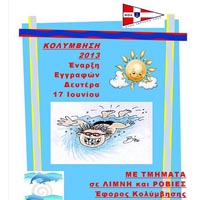
Would you like to learn how to swim? The Yachting Club of Limni is providing lessons three times a week.
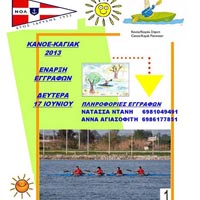
Would you like to learn kayak? The yachting club of Limni has arranged lessons during summertime.
Traditional sheep shearing
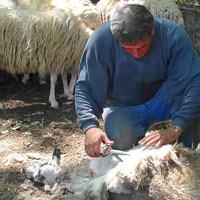
You need strength and skill to shear a lamb that’s why “shearing is the men’s job while the women prepare the food to treat the laborers”.
All the shepherds from around the area participate at the shearing of sheeps which takes place shortly before the sheeps are taken to higher places for the summer. This way hard work turns to a feast and the lambs are sheared so that they will feel more comfortable in the summer heat.
When the work is finished they all settle down to eat, drink and wish each other “till next year”.
Saint John the Baptist. June 24
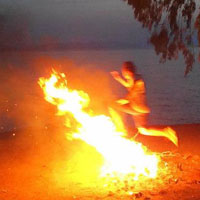
On June 24 the church celebrates in memory of John the Baptist.
The main characteristic of the holiday is the tradition of lighting fires the day before. There are lit in each neighborhood using the May wreaths for fire. Groups of children jump over the flames three times wishing for good health and deliverance from all evil.
Kiln
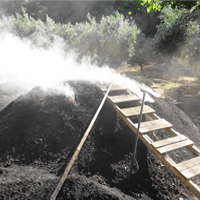
During the whole year but mainly before Easter you might see a narrow strip of smoke reaching to the sky. Is is the kiln where wood is slowly burned to produce wood cool. It is a process which is almost extinct. It needs skill to place the pieces of wood right and close attention day and night for 15-20 days.
The best coal is made from olive branches.
Museum of fossil mammals
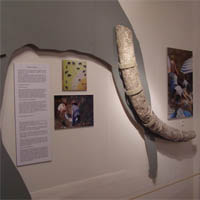
In Kerasia you will be presented with a geological attraction, which has been probably created after a volcanic eruption: the petrified forest.
There are petrified trunks of huge pine trees as well as fruits and leaves.
Mammoths, cheetahs, giraffes were living in the area.
From the small-scale excavation that has been done by Dr. George Theodorou Professor of Paleontology - Stratigraphy among the items that are presented in the museum, are a skull of a two horn rhinoceros,a tusk of Proboscidea and other findings. Many skeletal and cranial findings are rare.
You will be impressed with what you read on the signs and of the age of the findings: 6-10 million years.

